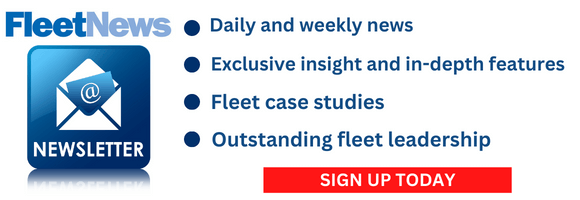Data from vehicle-embedded telematics, rather than aftermarket solutions, is more specific, more granular and more accurate, according to Mobilisights.
The Stellantis-owned data company, which was launched at the start of last year to leverage exclusive access to embedded data across the manufacturer’s 14 brands, says it also avoids unnecessary downtime for fleets.
Speaking to Fleet News while on a visit to the UK, Sanjiv Ghate, Mobilisights CEO, said the business had come a long way since its launch.
“Fleet has been our first area of focus,” he explained. “This is where we feel that the market is most ready to work with the telematic data and the need has been fairly pronounced for a while.
“People have settled for dongles or aftermarket solutions as a substitute for native data. That’s one of the things we would like to see changed because we believe that we have a better quality data with low friction, cloud to cloud, as opposed to dealing with all the physical installation and removal, and people tampering with the vans.”
Mobilisights recently announced that a fleet management data pack service will be included in all model year 2024 light commercial vehicles (LCVs) from Stellantis Pro One (Citroën, Fiat Professional, Opel, Peugeot, and Vauxhall), providing what it described as unmatched connected vehicle data services.
New vans will be offered to leasing, rental and fleet operators with up to four years of the embedded data services through a subscription model, already included in the vehicle price.
Mobilisights says it offers a compelling value proposition for fleet management with unique access to the near real-time connected vehicle data of Stellantis-branded OEMs through its API.
Ghate said: “Working together with Stellantis Pro One, we are helping enhance efficiency, safety, and sustainability of commercial fleets including those with electric vehicles, further reinforcing Stellantis Pro One’s dedication to connected services for business customers.”
Mobilisights is also working with a number of telematics providers, including Geotab and Webfleet, to provide access to Stellantis vehicle data.
Geotab recently announced an expanded partnership with Mobilisights allowing Stellantis vehicle-embedded telematics to be integrated into the MyGeotab platform.
It highlighted multiple benefits to fleets, including the factory-fitted telematics devices being activated remotely, eliminating downtime and the need to visit the installer’s workshop.
It also said that Stellantis native connectivity provides near real-time data, up to every one second for some signals.
Highlighting the difference between native data and aftermarket telematics solutions, Ghate said: “The external devices can read the same data on the OBD port. The question is, can they interpret it as accurately as somebody with a domain knowledge who has actually built the car?
“That's really the difference... we can be more specific, more granular, more accurate about what something means.”
He continued: “If your telematic data is natively provided by reliable sources, it can really change the game on so many fronts.”
Mobilisights is also targeting the rental sector with its fleet management solutions, to help control fuel management and optimise their operations with real-time data.
When vehicle rental company Sixt struck a multi-billion-pound deal with Stellantis to buy up to 250,000 vehicles in January, the pair said that they would explore potential to provide and develop data packages for developing and licensing business-to-business products and applications.
As a result of the deal, Stellantis said that the number of fully connected vehicles in the rental fleet would increase significantly, enabling telemetry data such as fuel level and mileage to be automatically transmitted to Sixt when a vehicle is returned. This will allow Sixt to streamline handling at branches benefiting customers with faster processing and better vehicle availability, it said.
With 14 million connected Stellantis vehicles globally, Ghate is eager to highlight a whole number of potential use cases where such a vast source of data could be employed.
He explained: “If we anonymise the data in a way that is industry compliant, then essentially you have data that can be used for the broader society and that’s also very exciting.
“We can begin to really understand traffic congestion, we can begin to understand hazardous road conditions, we can begin to understand atmospheric conditions.”
He continued: “We are supporting, or we are providing, or we are about to start providing some of the services where we can use the aggregated knowledge in an anonymised form to really support all these broad use cases.”
Ghate says that could include road safety. “We can look at accident patterns and say why there are certain places which are experiencing higher than average rates of accidents,” he explained. “That type of a data can be benefit all of us.”
In terms of fleets, this could also include comparing the efficiency of certain routes. “This is where we are heading, to create a better world, to create a smarter world through the data in a privacy compliant fashion,” he concluded. “That's really our mission.”



















Login to comment
Comments
No comments have been made yet.